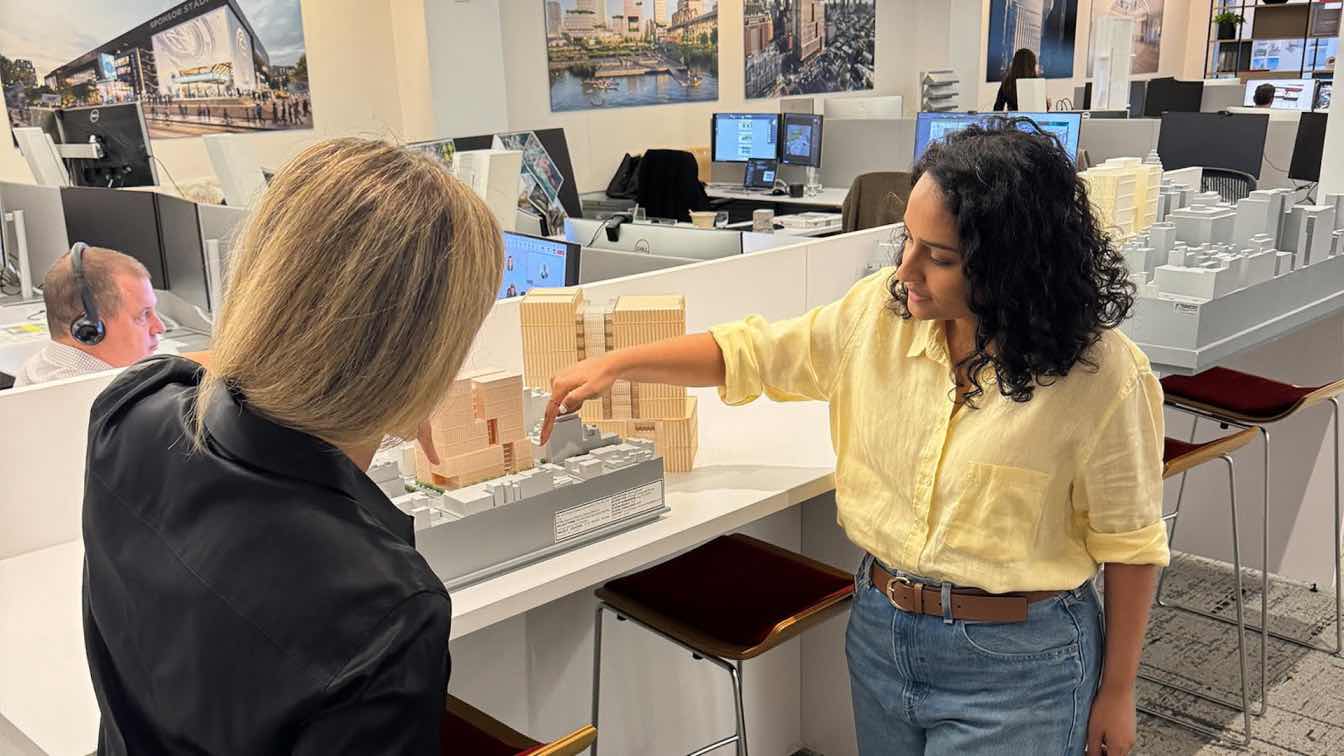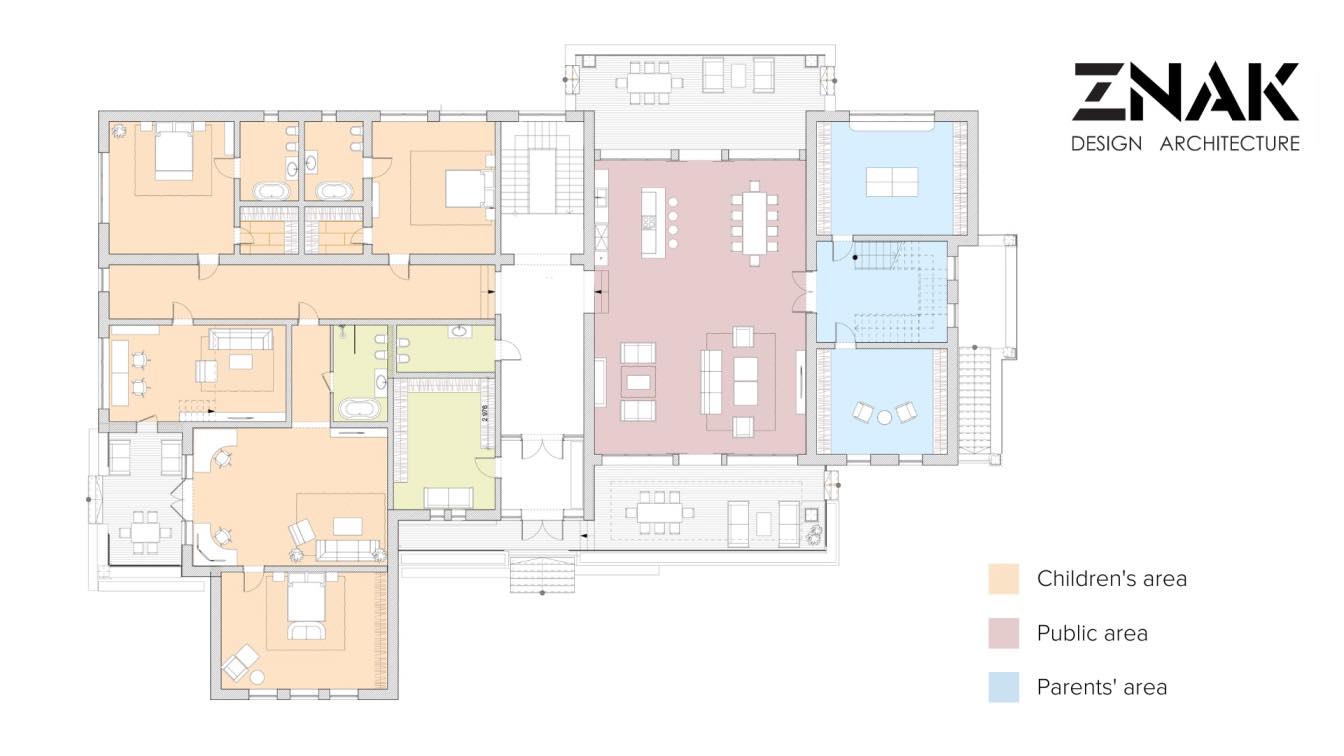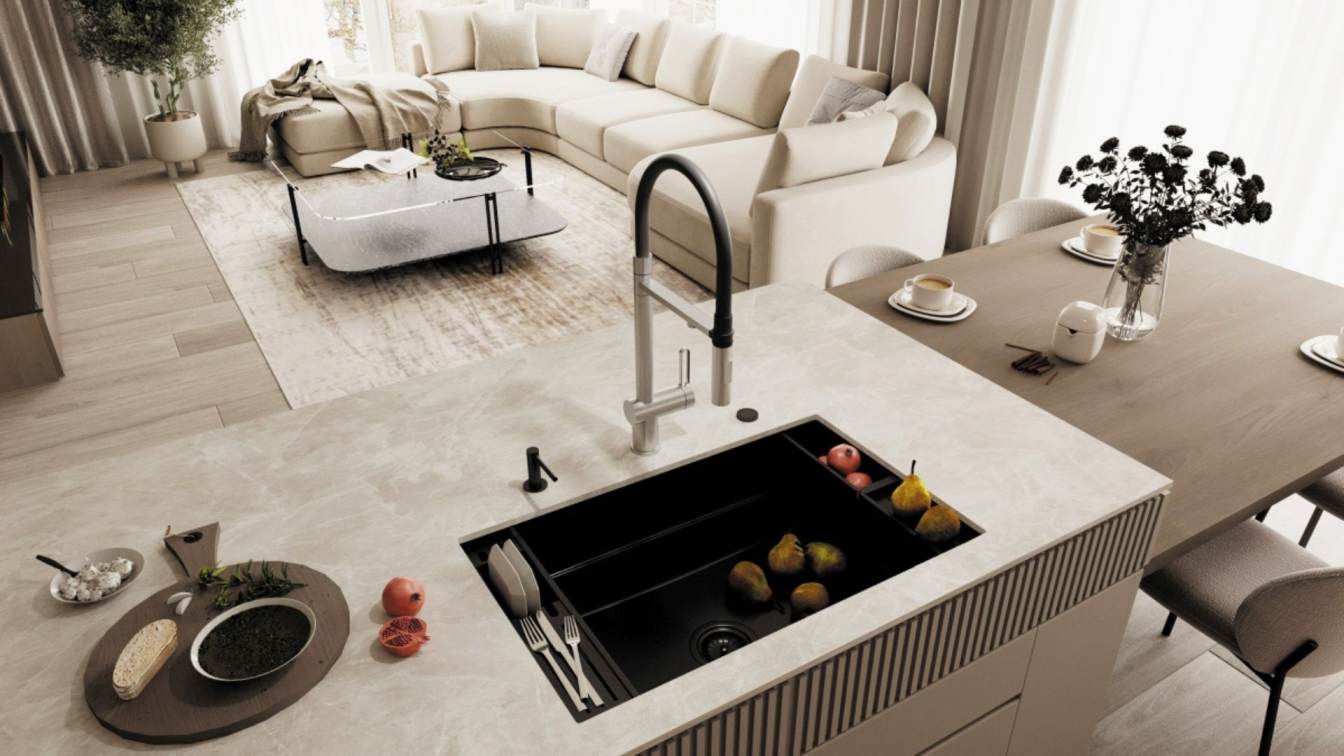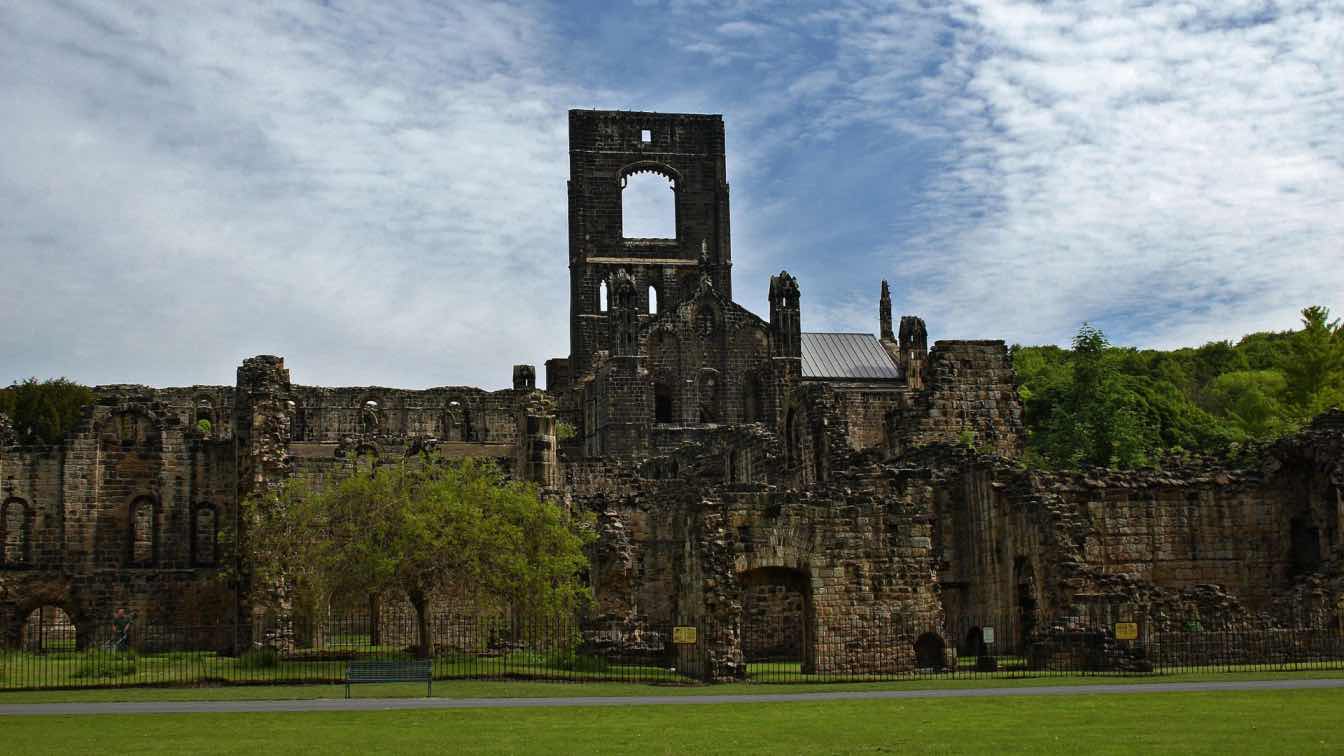Resilience in design requires a careful balance between the environment’s short- and long-term impacts on buildings and their occupants. Designing in this way acknowledges the interconnected complexities and unpredictability of the modern world. Understanding what makes a building, community, or city resilient involves considering environmental changes, social structures, and the economic realities of a design project. Aruna A Das, an urban designer at the HOK Group, dedicates her energy and thought beyond her full-time commitments to pursuing sustainable and resilient design.
Das graduated with a bachelor's in architecture from Bangalore, India, and soon joined the master planning team at RSP Architects, a multinational firm. During her three-year tenure, she contributed to the design and master plans for high-profile clients like Microsoft and the Prestige Group. While dedicating countless hours to thoughtful design for her clients, she often pondered what the rapidly developing city of Bangalore could look like with similar dedication to its planning.
Nestled between modern tech campuses and luxury residential communities were slivers of slums, where something as basic as access to clean water is a daily struggle. These early observations motivated Das to take action. She and a group of designers partnered with a local NGO to build a classroom to facilitate the education of children in the slums. This experience deepened her commitment to sustainable design as both a philosophy and a practice. While the classroom and the teaching resources provided were impactful, Das’ desire to broaden her influence led to her team winning a bid from the Ministry of Housing and Urban Affairs to design India’s first smart cities. More recently, Das collaborated with peers to propose a food hub network along the Hudson River to serve the local community and the entire River Valley region. This proposal was among the top 50 selected from 670 submissions nationwide as part of the Green New Deal (GND) Superstudio. We spoke with Das about her journey and what lies ahead in sustainable design and resilient planning.
 Aruna is on the right, in a discussion with her team and client
Aruna is on the right, in a discussion with her team and client
What led you to build the classroom for the underserved, and how did that experience impact you professionally and personally?
“Seeing a tarp-sheltered slum housing sandwiched between modern IT campuses within a 30-meter stretch of road would compel anyone to act. My peers and I were fortunate enough to turn that feeling into action. Many NGOs in India do impactful work to uplift families below the poverty line. We partnered with one such NGO, Multi-Habitat, to provide teaching resources in exchange for building a classroom. The classroom's construction was an exercise in design, ingenuity, and resourcefulness. With the meager funds we raised, we bought materials to make cement. The remaining resources were sourced locally: bricks from abandoned sites and beer bottles purchased at a steep discount. The cement-filled beer bottles not only made for a strong wall but also helped diffuse light, eliminating the need for daytime lighting and freeing up energy for other uses. Additionally, we repurposed discarded cardboard to create expandable seating arrangements that could support more than 15 adults. The design principles centered around reducing, reusing, recycling, and rehabilitating. The excitement in the children's eyes when they entered their new classroom made the entire experience worthwhile. That moment left a lasting impression on me.”
Pivotal experiences like building the classroom and other incremental ones along the way aligned with Das’ commitment to sustainable design. She has since contributed to sustainable design at various scales, working with corporate clients and governments. While Das would like to do more grassroots work, she notes that sustainable design is often costly, making it accessible primarily to those with the means to implement it at scale. "While the school we built was completed on a limited budget, the standards for corporate clients and the complexity of larger projects would require a much steeper investment."
 Cement-filled bottles lining the wall of the classroom in Thannisandra
Cement-filled bottles lining the wall of the classroom in Thannisandra
What does it mean to apply sustainable design at varying scales? What does that look like?
“Scale here quite literally translates to size and is often a proxy for impact. The classroom we built in Thannisandra directly impacted the children in that community. Applying sustainable design at the scale of districts or cities is significantly more complex, though it can benefit many more people. The broader adoption of sustainable design has increased, catalyzed by more frequent natural calamities and their impact on the global economy. This adoption is happening at both macro and micro scales, involving nations and private entities.
Having worked with corporate clients across various industries and geographies, I know the demand for sustainable designs is growing. We increasingly discuss incorporating energy-efficient materials, inclusive spaces, and planning for environmental challenges, from rising temperatures to flood resistance. That being said, there is still a long way to go. As urban designers, we must advocate for a holistic approach to sustainable design: integrating with the natural environment, considering the impact of emissions (aiming for net carbon neutral or net carbon positive designs), and addressing waste and material longevity.
In 2017, my team at RSP submitted a design proposal for a smart city in Davangere, Karnataka. Our proposal was one among hundreds for India’s first smart city initiative. I still recall the shock when we learned our bid won. The chance to design a city is rare, making the grueling process worthwhile. By grueling, I mean it; while it would be impossible to list all the design considerations, here are a few. First, we organized community sessions to understand the current state of affairs and what the local population valued. Surveys were conducted to determine how best to integrate with what already existed to minimize waste. Beyond the present, we had to imagine and design for the future across various disciplines, including energy management, urban mobility, waste management, e-governance, and healthcare infrastructure. For example, in urban mobility, we considered zoning within the city to promote walkability, reduce vehicle emissions, encourage community interaction, enhance security, and accommodate different types of vehicles. Alongside the design, we developed an execution plan outlining a phased approach to transition from the existing state to the envisioned future, encompassing retrofitting, redevelopment, and greenfield developments. Every project has its complexities, but designing a city is in a league of its own. The experience provided a unique perspective on design, offering insight into the considerations city planners make when approving new buildings, stadiums, or hospitals. More recently, I focused on a different aspect of sustainable design: regenerative farming and the food network supporting the Hudson River.”
 Regenerative Connection Master Plan
Regenerative Connection Master Plan
Can you speak more about your recent project in the sustainable design space? What insights do you have into the differences between these two projects?
“Absolutely! In 2022, a group of peers and I formed a team to compete in the Green New Deal (GND) Superstudio, an initiative inviting designers, planners, and other professionals to envision projects addressing climate change and social inequities through sustainable and equitable practices. Among 670 submissions, our project, The Regenerative Connection, was among nine curated under the ‘Cultivate’ banner—an initiative to design alternative solutions to address the exploitation of America’s food system.
The project promotes regenerative farming practices in the Hudson Valley to reduce carbon emissions and enhance sustainable agriculture. Our research showed that by 2050, expanding regenerative farms could dedicate 1 billion acres to carbon sequestration, potentially reducing global carbon emissions by 23.2 gigatons. The Hudson Food Haul initiative proposes a food hub network along the Hudson River, supporting local farmers by providing shared infrastructure for processing and distribution, enhancing economic viability, and increasing access to healthy food options. Additionally, the project aims to connect farms with their communities, address food inequities, and create new job opportunities while utilizing sustainable transportation methods like electric barges along the river. Only through the union of policy and design can we push the design space towards a more sustainable future. While there’s no guarantee our project will be implemented, it contributes to a foundation of solutions that may eventually be realized.
The two projects, the Smart City Proposal and Regenerative Connections, share some common elements, but there are three key differences: scope, purpose, and participants. The smart city required designing across diverse pillars, whereas the Regenerative Connections project focused deeply on a single aspect: the transportation network of fresh produce. The nature of the designs and the demographics of the competitors also differ. The smart city initiative aimed to create ‘a replicable model which will act as a lighthouse to other aspiring cities,’ with proposals evaluated heavily on their practicality. In contrast, the GND Superstudio called for designs "of the possible," rooted in reality but intended to disrupt existing norms and spark discussions about the future. Another difference is the makeup of the competitors. The smart city designs were submitted by architecture firms juggling day-to-day business with competing for the bid. In contrast, the GND Superstudio attracted participants from ‘90 universities in 39 states and 10 countries, as well as hundreds of practitioners from across the design disciplines,’ focused solely on innovation. In retrospect, both projects taught me much about sustainable design. With my knowledge and connections, I’m excited about integrating sustainable design principles into our daily work.”
 Regenerative Connection Design Improvement on Food Processing
Regenerative Connection Design Improvement on Food Processing
It’s inspiring to see you actively working to make your community and country a better place. For those who aren’t urban designers or architects, how can ordinary people get involved in this field?
“I understand that getting involved can seem daunting. While contributing as an urban designer requires years of study and practice, there are other avenues: policy, advocacy, allyship, and volunteer work. The individual efforts of many are what will push the engine for change forward. We are fortunate to be in countries where the groundwork for contribution has been laid by those before us. This privilege does not exist in places lacking institutions that provide access to resources across socioeconomic strata. In countries like the United States and Germany, the infrastructure and programs are more developed, lowering the barriers to entry and attracting more talent, resulting in thoughtful solutions. I’m only scratching the surface of what sustainable design entails; similar initiatives are likely happening in fields like computer science, medicine, law, and construction. I encourage everyone to get involved at all levels.”
As you look ahead, what excites you most, and where do you plan to focus your efforts?
“I aim to engage more with local community organizations in sustainable design and drive greater impact through my expertise in urban design and passion for technology. Many great organizations, such as the Urban Design Forum, are already building awareness and attracting talent. They are a nonprofit organization “dedicated to fostering creative and forward-thinking dialogue about urban planning, architecture, and design in New York City.” I plan to get more involved with them in the coming years and actively partner with planners, policymakers, and community leaders to create a more inclusive, sustainable, and vibrant urban landscape. While participating in design competitions is a form of action, until it is implemented, the impact is often short-lived and limited in scope. Education, on the other hand, is everlasting and can compound from one generation to the next, which is why, in addition to staying in touch with the practice of sustainable design, I plan to use my interest in art as a medium to raise awareness around issues my local community faces for the local community. I am hopeful for our progress as a community and a nation as we pave the path forward.”
As our conversation draws to a close, Das shares her insightful perspectives on the future of sustainable design. Our discussion with this distinguished urban designer and planner has been both illuminating and inspiring, offering a glimpse into the collaborative efforts shaping our cities and communities. Das' expertise underscores the importance of interdisciplinary cooperation in addressing urban challenges. It's heartening to learn that professionals from diverse fields—urban planners, designers, policy experts, and technologists—are joining forces to create more livable and sustainable environments.
 Aruna on the right, presenting a design for a private client
Aruna on the right, presenting a design for a private client
With characteristic generosity, Das extends an invitation to fellow designers and planners to connect with her on LinkedIn, fostering further collaboration in this vital field. As we conclude, one can't help but feel optimistic about the future of our urban spaces, guided by visionaries like Aruna Das.
We extend our gratitude to Das for sharing her valuable insights and wish her continued success in her endeavors to shape a more sustainable world.





